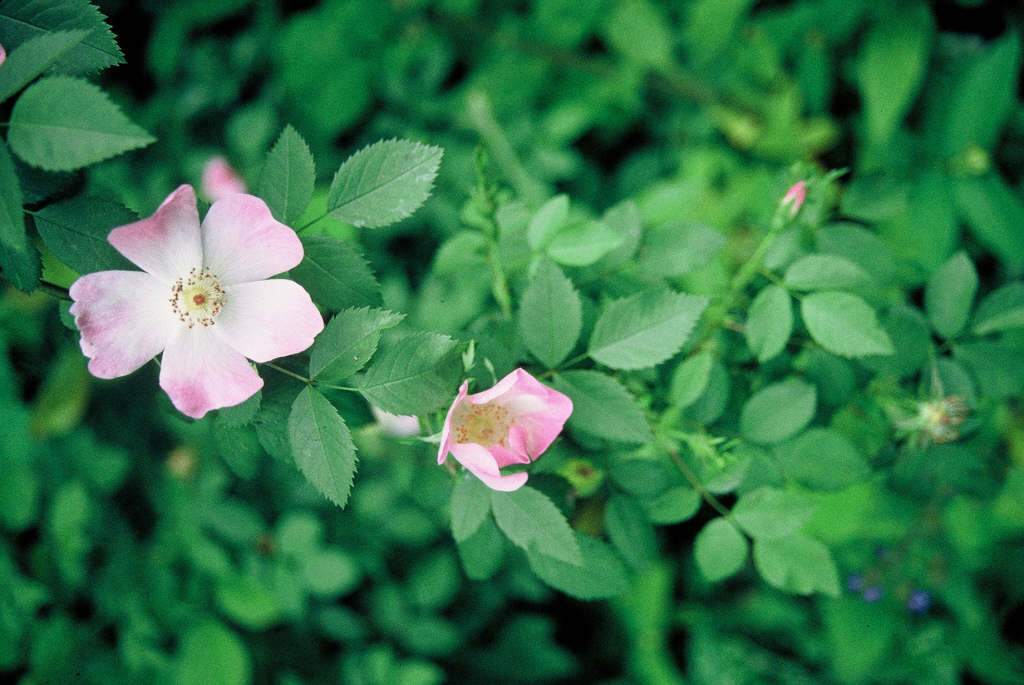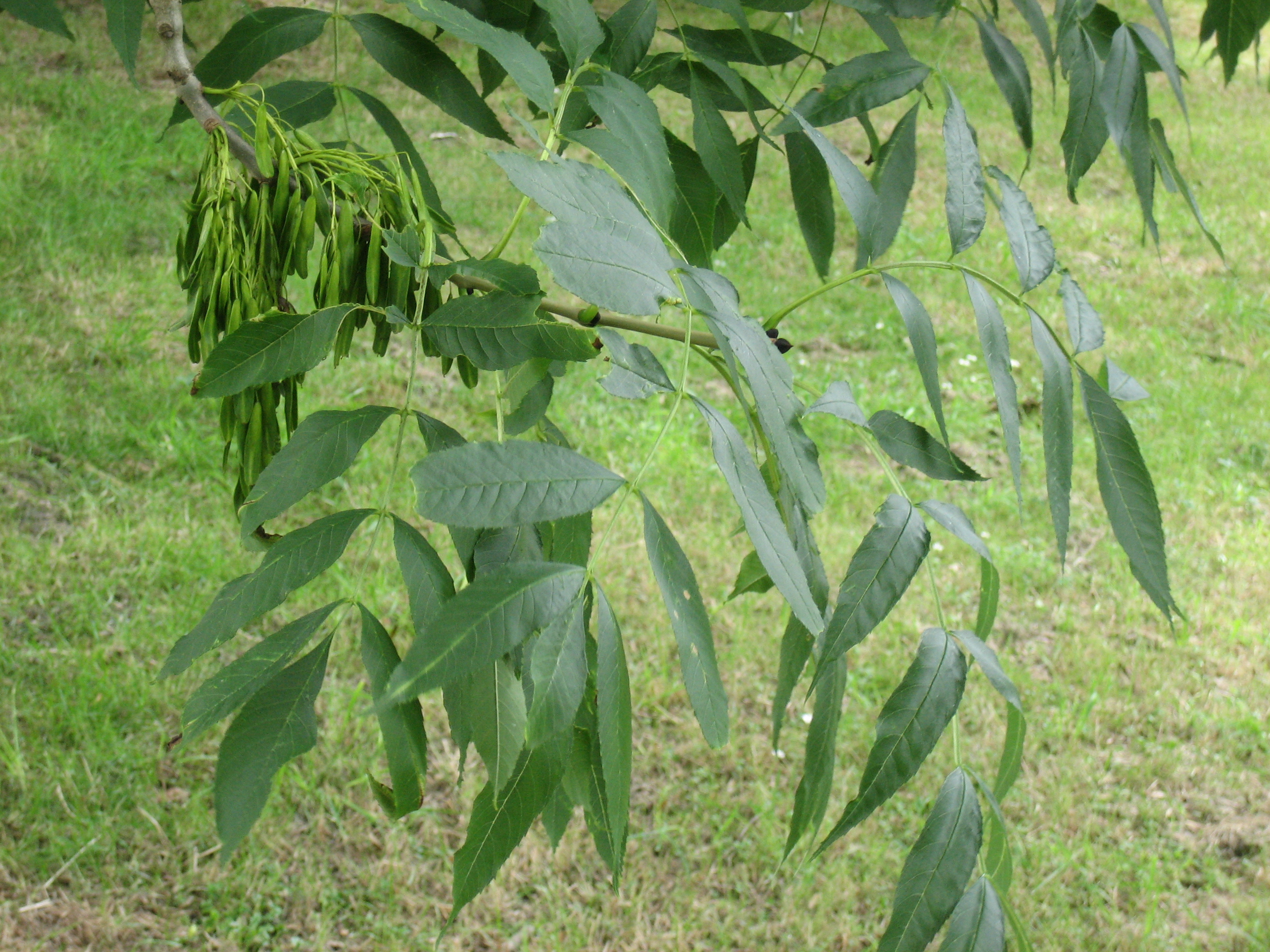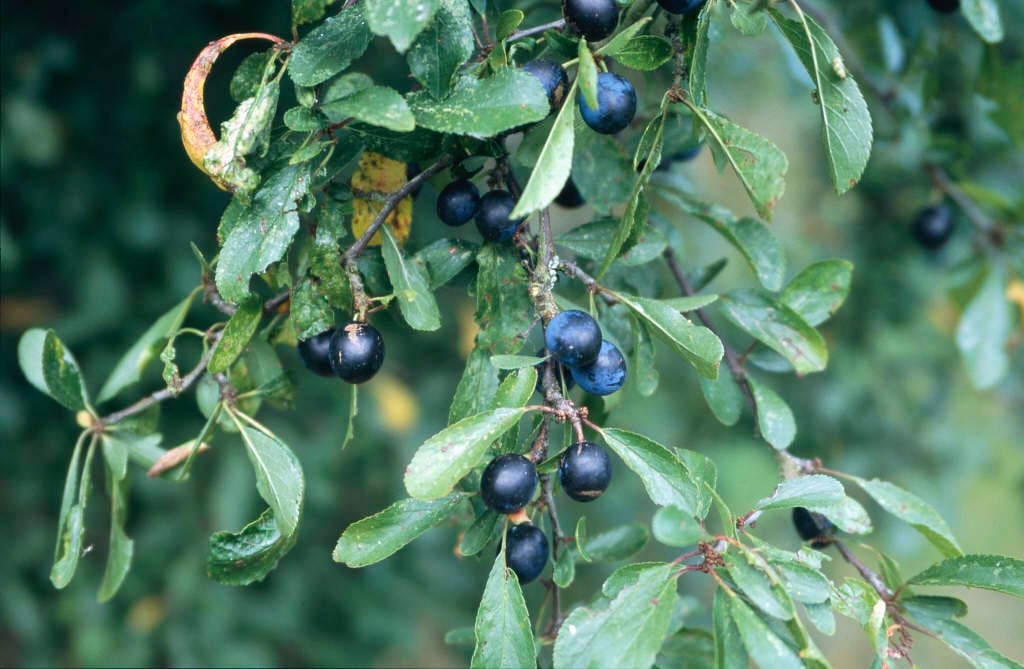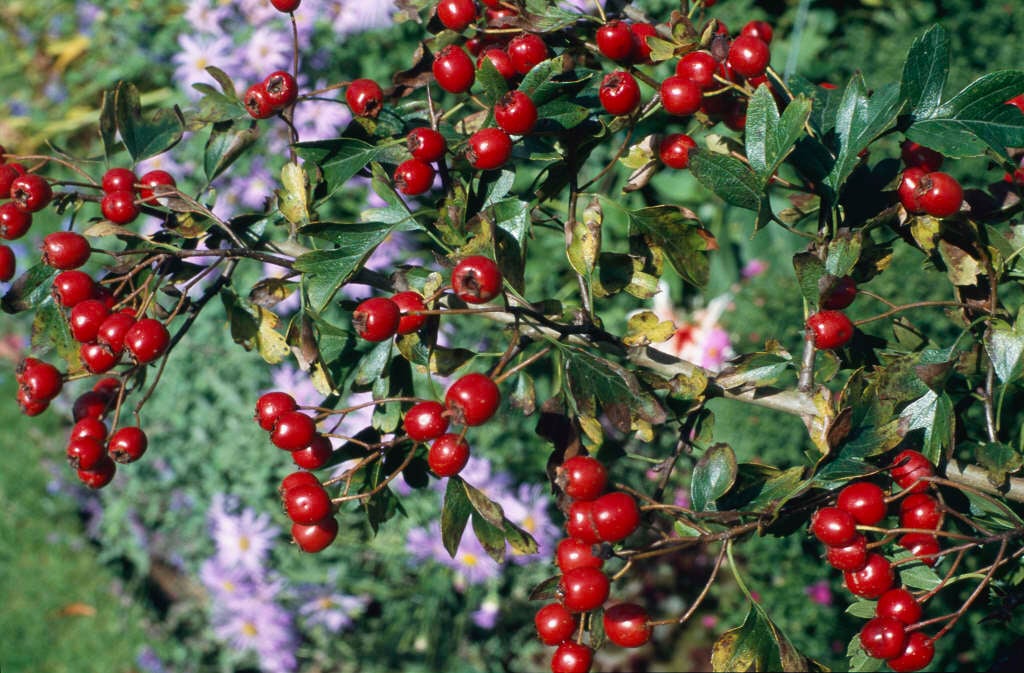~~
 |
| Image source and further information: RHS Plant Selector |
A native thorny and vigorous shrub with pink or white flowers and red hips. Most useful as hedging or in wildlife gardens and hedgerows.
Size: 2.5-4 x 1.5-2.5 m
Cultivation notes:
Shrub; Plant November to March, mulch well, water in drought. Manages all aspects and exposed sites.
Acer pseudoplatanus - sycamore
 |
| (Source) |
A long-naturalised large tree, widely used in landscaping and parklands as it manages exposed locations well. A traditional hedgerow component.
Size: 30x25 m
Cultivation notes:
Trees; plant in a hole 1.5 times the size of the root ball, incorporate organic matter, support and mulch well. Keep well watered until established.
Will grow vigorously in almost any soil, to the point of weediness and is considered an invasive species in parts of North America.
Fraxinus excelsior - ash
 |
| Note the distinctive black buds. (Source) |
 |
| (Source) |
*RHS award of garden merit
Size: 30x20 m
Cultivation notes:
Another potentially weedy tree.
Trees; plant in a hole 1.5 times the size of the root ball, incorporate organic matter, support and mulch well. Keep well watered until established.
Rosa rugosa - hedging rose
 |
| (Source) |
A fiercely prickly deciduous shrub with strongly-perfumed flowers, large hips and colourful foliage in the autumn. Will form dense thickets and is excellent for thorny hedging.
Size: 1-2.5 x 1-2.5 m
Cultivation notes:
Shrub; Plant November to March, mulch well, water in drought. Manages all aspects and exposed sites. Can be invasive.
Hedera helix - ivy
 |
| Climbing H. helix |
 |
| Bushy adult H. helix |
 |
| Adult form. Note leaf shape and immature berries. |
An evergreen native climber which, when mature, provides wildlife with pollen early in the spring and berried in the winter.
Height: 10 m
Cultivation notes:
Prefers limy soil. Green-leaved vars will grow up shaded walls, but variegated forms will need more light.
Botanical note: Ivy grows in two forms. The climbing or trailing juvenile form with the typical leaf shape, and the mature or adult form (see images). An adult ivy becomes bushy and top heavy, starts producing flowers and berries every year, and will no longer climb. The adult form takes over once the ivy has climbed high enough to have lots of light and an open aspect - or has just run out of support. Regular pruning will keep an ivy in the juvenile climber form.
Quercus robur - English or pedunculate oak
 |
| Note the way leaves have no stems. |
The quintessential native tree of the British Isles. Used as a specimen tree, in parklands and for timber.
*RHS award of garden merit
Size: 35x25 m
Cultivation notes:
Trees; plant in a hole 1.5 times the size of the root ball, incorporate organic matter, support and mulch well. Keep well watered until established.
Relatively slow-growing and very long-lived.
Taxonomical notes: can most easily be identified from Q. petraea by its sessile leaves and pedunculate acorns. There's a bewildering array of oak species in cultivation as this image from the RHS Encyclopedia of Garden Plants demonstrates.
 |
| Source: Brickell, 1996 p. 855. |
Quercus petraea - sessile oak
 |
| Note the stems on the dead January leaves. |
*RHS award of garden merit
Size: 30x25 m
Cultivation notes:
Trees; plant in a hole 1.5 times the size of the root ball, incorporate organic matter, support and mulch well. Keep well watered until established.
Taxonomical note: can most easily be identified from Q. robur by its long-stalked leaves and stalkless acorns.
Symphoricarpos albus laevigatus - snowberry
 |
| (Source) |
A dense, deciduous shrub producing an abundance of large, white glistening berries for the autumn. An excellent hedging plant that is ideal for poor soils or shady, dark corners. Also good for shelter or game cover.
Size: 2x2 m
Cultivation notes:
Shrub; Plant November to March, mulch well, water in drought.
Prunus spinosa - blackthorn, sloe
 |
| (Source) |
A native hedgerow shrub or small tree that carries spring blossom on bare branches in spring time. Autumn sloes can be used in preserves or flavoring gin.
Size: 5x4 m
Cultivation notes:
Plant either as a shrub or like a tree as per the general cultivation guidelines, depending on size.
Crataegus monogyna - hawthorn
 |
| (Source) |
 |
| Hawthorn tree in full bloom. (Source) |
Another thorny native of the hedgerows. Produces spring blossom once in leaf and red haws in the autumn. Used extensively for hedging, but can grow into a sizable tree.
Size: 10x8 m
Cultivation notes:
As Prunus spinosa.
No comments:
Post a Comment